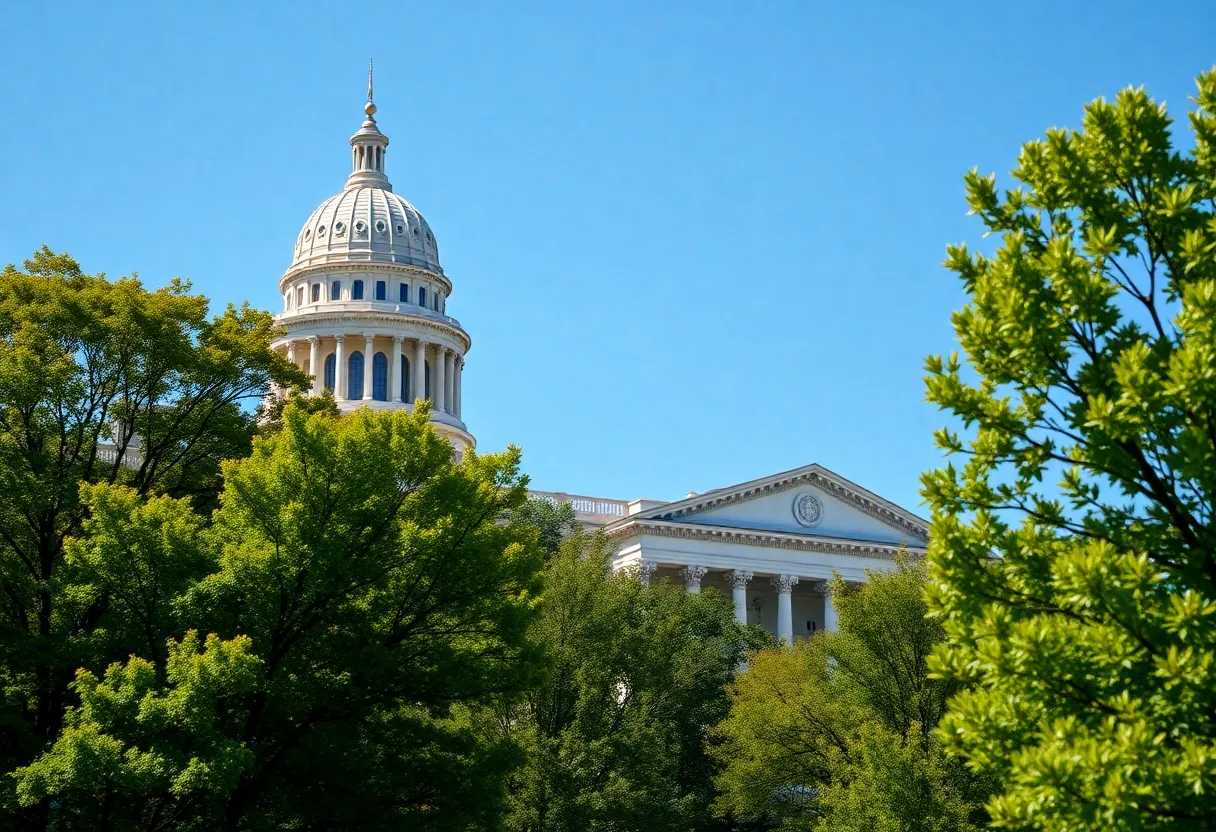News Summary
Virginia’s Office of Regulatory Management (ORM) has achieved $1.2 billion in annual savings for taxpayers, even amidst federal budget cuts. By implementing various regulatory reforms, including streamlining licensing processes and improving building codes, Virginia has showcased a balanced approach to governance. This stability stands in contrast to the federal cuts that have resulted in significant job losses across the nation. As Virginia continues to thrive, the state aims to solidify its reforms to ensure long-term financial efficiency and support for communities affected by federal changes.
Virginia’s Regulatory Management Is Raking In Savings Amidst Federal Cuts
In the vibrant state of Virginia, a remarkable shift is taking place as the Office of Regulatory Management (ORM) has successfully saved taxpayers a whopping $1.2 billion annually, even with the backdrop of controversial cuts from President Trump’s Department of Government Efficiency (DOGE). How did Virginia navigate these tumultuous waters? Let’s break it down!
What’s the Deal with DOGE?
First off, the DOGE initiative, headed by the bold billionaire entrepreneur Elon Musk, aims to clamp down on government waste and bureaucratic bloat. The strategy has been described as undeniably aggressive and somewhat controversial, especially with the broad approach sweeping away programs—some that tackle important topics like diversity, equity, and inclusion as well as foreign aid and health grants.
Virginia’s Calm Approach
In contrast, Virginia’s path to regulatory efficiency has been much more methodical. Under former Governor Ralph Northam, the state launched regulatory reforms in 2018, focusing on cutting unnecessary occupational licensing requirements. Fast forward to 2022, the new Governor Glenn Youngkin established ORM to centralize regulatory oversight and significantly trim down regulations by targeting a steep 25% cut across state agencies.
Tracking the Savings: How Virginia Did It
So, what exactly contributed to this impressive $1.2 billion in savings? Several reforms have played a key role:
- Building Code Reforms: Saving around $723 million while slashing construction costs for new homes by about $24,000.
- Fast-Tracking Licensing Approvals: The Department of Professional and Occupational Regulation expedited processes, resulting in an additional $179 million in potential earnings for hardworking Virginians.
- Stormwater Management Improvements: Adjustments here led to $124 million saved, promoting not just financial relief but also better environmental practices.
- General Permit Process at the Marine Resources Commission: A newly introduced process saved $47 million—kudos to streamlined operations!
- Election Fairness: By eliminating witness signature requirements for absentee ballots, Virginia saved $7.1 million annually.
The Need for Stability
Despite these gains, the ORM’s accomplishments could be vulnerable to the changes brought on by future governors as most of the reforms were set up via executive order. Advocates are calling for solidifying ORM into law, aiming for long-term stability and continued savings.
What About Those Affected by Federal Cuts?
While Virginia is riding high on savings, the situation isn’t so rosy for everyone. The DOGE initiative has spurred significant layoffs, with around 6,000 veterans already losing their jobs out of a projected 80,000 cuts for the nationwide VA workforce. The effects aren’t merely numbers but are felt in the communities, especially among essential service workers caring for veterans. Virginia’s Lt. Governor even stirred up some controversy with remarks about the layoffs – indicating a tough balancing act between financial efficiency and support for those affected.
Looking Ahead
As the state continues to thrive with nearly 250,000 open jobs despite federal layoffs, Virginia finds itself in a particularly interesting political climate. Democratic members are feeling optimistic about upcoming elections as frustrations rise among federal workers, especially those impacted by the cuts. Should these regulatory savings and necessary changes remain intact, Virginia could continue to serve as a model for others while navigating the complex waters of state versus federal strategies.
As this story unfolds, we’ll keep an eye on how Virginia’s ORM develops and its future in the dynamic world of regulatory management. For now, it looks like Virginians can breathe a bit easier, knowing their state is making strides towards efficiency while keeping an eye on the concerns of its citizens.
Deeper Dive: News & Info About This Topic
- Forbes: Virginia’s Leading the Way on Government Efficiency
- Virginia Mercury: Earle Sears Comments on Federal Layoffs
- West Virginia Watch: Gutting the Federal Workforce Won’t Make Government More Efficient
- HuffPost: Democrats Hope DOGE Will Bite the GOP in Virginia Elections
- Google Search: Virginia Regulatory Management







